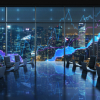Insights
Asia corporate high yield: Market review and outlook
Asia high yield credit had a tough start to 2022, succumbing to heavy selling pressure . Apart from geopolitical tensions, tighter financial conditions and rising recession risk in major developed economies, sentiment toward Asia HY has been heavily weighed down by sustained stress in China’s property sector. Going forward, we believe the pace of correction will moderate.
Global Unconstrained Bond Fund Q3 2022 Outlook
We present our Q3 2022 outlook for the Global Unconstrained Bond Strategy which incorporates our core markets, emerging markets and global credit views.
Asia bonds: Calmer seas ahead
We explain why we are more positive on Asia bonds than we were at the beginning of 2022. To begin with, inflation in Asia is less severe compared to other regions, lessening the need for Asian central banks to tighten aggressively. This makes Asia bonds attractive from a real yield perspective.
Balancing Act-Monthly insights: Multi-Asset Team-July 2022
The East and West appear to be headed in different directions. The East may benefit from China’s easing and supportive growth characteristics. Meanwhile, the West is mired in slowing growth, excessive levels of inflation and central banks ever more eager to take down inflation through conventional tool kits designed to slow demand.
On the Ground in Asia-Monthly Insights: Asian Fixed Income-June 2022
Inflationary pressures accelerated in May across the region, due to higher transport and food prices. We maintain our preference for Malaysian bonds, as we believe that inflation will be better contained in Malaysia compared to other countries.
Our view on Japan’s upper house election
As it often is when Japan’s Liberal Democratic Party wins an election by an impressive amount, the initial equity market reaction was positive. But the ramifications of the ruling party’s upper house election victory will in the intermediate term be a function of what happens to the global economy and geopolitics in the months and quarters ahead.
Navigating Japan Equities: Monthly Insights from Tokyo (July 2022)
We take a look at why the Bank of Japan is likely to stick to its easy monetary policy even as other central banks embark on policy tightening; we also highlight the signs of a full-fledged capex recovery taking place in Japan.
Chinese EVs and their potential from an investment perspective
There has been remarkable progress in electric vehicle (EV) technology and its acceptance globally. We believe that Chinese EVs are set to lead the world in this area as technological innovation, demand, government policy and consumer behaviour have put China ahead of Europe and the US.
Fears of a recession and the US CPI hitting a four-decade high of 8.6% year-on-year in May rippled through various economies. Asian markets took heed from the multiple headwinds in the US, with inflation being a common theme across the region. For the month, the MSCI AC Asia ex Japan Index fell by 4.5% in US dollar terms.
Amid today’s incessant chatter of rising inflation and global recession fears, we identify three high conviction themes driving a growth renaissance in ASEAN: electric vehicles (EVs), digitalisation and a revival by the old industrial economy.
“Stagflation-lite” coupled with a severe geopolitical crisis was much worse for equities than we expected, but most of the bad news is priced in, so the prospect for global economies and equities in aggregate should improve. While we expect global GDP to moderately underperform consensus, it should skirt recession and positively surprise equity markets, which increasingly have priced in recessionary conditions.
Balancing Act-Monthly insights: Multi-Asset Team-June 2022
Defined as negative growth for two consecutive quarters, a recession is certainly in the realm of possibilities (if not probable). However, it may be more a reflection of continued extreme economic volatility following the COVID-19 pandemic, rather than a conventional recession that follows an extended period of economic expansion.
Japan’s “new form of capitalism” in review
We review the “new form of capitalism”, a government plan to boost economic growth initiated by Japanese Prime Minister Fumio Kishida, who is enjoying a high public approval rating ahead of a closely watched upper house election.
Navigating Japan Equities: Monthly Insights from Tokyo (June 2022)
This month we explain why losses by Japanese equities so far in 2022 have been limited relative to their peers; we also assess the positive impact a return of inbound tourism could have on Japan’s economy and markets.
Japan’s “show me the money” corporate governance: 1Q record high
The just-released 1Q CY22 data on aggregate corporate profits in Japan was positive, with the overall corporate recurring pre-tax profit margin hitting a record high on a four quarter average. Both the non-financial service and manufacturing sectors contributed, with the latter surging to another record high. Note that the strong results occurred despite quite weak GDP, further proving the long-held theme of this report that profit margins remain on a structural uptrend despite sluggish domestic GDP growth, as shown in the charts below. Increased pricing power, coupled with improving corporate technological prowess and efficiency, should be credited for this, but improving global economic growth certainly was also a major factor.
For the last two centuries energy revolutions have created extensive platforms for subsequent technologies to drive wealth creation and raise living standards across the world. And this decade heralds the start of an energy revolution providing investors with lots of opportunities—the beginning of an energy broadband infrastructure boom.
Harnessing Change: An investment philosophy for Asia
Change is both more prevalent and significant in Asian markets. We believe that seeking to understand it is essential to deliver sustainable returns.
Balancing Act-Monthly insights: Multi-Asset Team-May 2022
The outlook is increasingly clouded as markets come to terms with a Fed that may do “whatever it takes” to contain inflation. Given that current inflationary pressures appear to be mainly driven by supply-side constraints and rising energy prices, it follows that the Fed would need to be willing to take the economy into a recession to meet its mandate.
Asian markets were downcast in April as investors were concerned about inflation and the likelihood of a larger-than-expected rate hike by the US Federal Reserve. For the month, the MSCI AC Asia ex Japan Index fell by 5.2% in US dollar (USD) terms.
Global Unconstrained Bond Strategy Q2 2022 Outlook
We present our Q2 2022 outlook for the Global Unconstrained Bond Strategy which incorporates our core markets, emerging markets and global credit views.
Navigating Japan Equities: Monthly Insights from Tokyo (May 2022)
We discuss the implications of the weak yen, now considered by some as a menace rather than a blessing, for the Japanese market and economy. We also explain the potential impact of higher energy and commodity prices.
Ground-level observations from China
A trip back to China provided an opportunity to experience first-hand the impact innovative technology and digitalisation is having on a fast-changing urban society.
Balancing Act-Monthly insights: Multi-Asset Team-April 2022
Relief rallies are always encouraging but do not necessarily portray parting clouds for a return to “normal” market conditions. The market is still digesting a rather dizzying array of challenging dynamics that have unfolded quickly over the last quarter.
Global Equity Quarterly (Q1 2022)
We are keen to participate in the push towards a less carbon intensive future but want to do so in a balanced fashion, with one eye on the associated risks.
On the Ground in Asia-Monthly Insights: Asian Fixed Income-March 2022
We have eased our cautious view towards duration as we expect global rates to consolidate from current levels. On currencies, we are positive on the Malaysian ringgit, Indonesian rupiah and Singapore dollar.
Harvesting Growth, Harnessing Change - Monthly Insights: Asian Equity-March 2022
Asian stocks declined in March, dragged down by the Russia-Ukraine conflict. Lingering concerns over inflation also weighed on the equities markets. For the month, the MSCI AC Asia ex Japan Index fell by 2.8% in US dollar terms.
Navigating Japan Equities: Monthly Insights from Tokyo (April 2022)
This month we discuss the Japanese stock market’s recovery from the initial shock of the Russia-Ukraine war; we also assess the potential impact of a Russian debt default on Japan’s markets and financial system.
Japan Value Insights: Spotlight on sustainable companies addressing social issues
We share our thoughts on sustainable companies that address social issues and contribute to the physical and mental well-being of individuals.
The GIC expects the global economy to continue struggling in a form of “stagflation-lite” and sees a relatively flat performance for global equities for the next three to six months (although quite positive on Pacific equities), with moderate weakness for global bonds.
Balancing Act-Monthly insights: Multi-Asset Team-March 2022
The Russian invasion of Ukraine has created significant uncertainty for investors. Prior to the war’s outbreak, central bankers were already facing a challenging inflationary environment, and these new commodity-driven price pressures are set to complicate matters even further.
On the Ground in Asia-Monthly Insights: Asian Fixed Income-February 2022
We are generally neutral to slightly cautious in our view of countries whose bonds are relatively more sensitive to UST movements. Within Asia currencies, we prefer the Chinese renminbi and Malaysian ringgit over the Indian rupee and the Philippine peso.
Navigating Japan Equities: Monthly Insights from Tokyo (March 2022)
This month we discuss how higher long-term yields could impact Japanese stocks; we also focus on how robust exports could play a role in boosting the country’s long stagnant wage growth.
Japan’s “show me the money” corporate governance: 4Q record high
The just released 4Q CY21 data on aggregate corporate profits in Japan was very positive, with the overall corporate recurring pre-tax profit margin hitting a record high on a four quarter average.
Russia-Ukraine conflict – Nikko AM’s views
In order to gain a range of perspectives on the Russia-Ukraine conflict, Nikko Asset Management has gathered the views of various experts and investment teams, representing many of our major asset classes and geographical regions.
On the Ground in Asia-Monthly Insights: Asian Fixed Income-January 2022
Policy actions by monetary authorities diverged across the region; we remain cautious on bonds of low yielding countries and regional currencies.
Navigating Japan Equities: Monthly Insights from Tokyo (February 2022)
We analyse the course the Bank of Japan could take as other major central banks move towards policy change; we also take a deeper look into Japan’s strong exports, which are expected to keep buoying the economy in 2022.
Have you ever stopped to imagine what would happen if the world’s central banks spent just over a decade pouring USD 25 trillion of liquidity into the economy with more than 60% of that liquidity created in the last two years? In this article, we’ll try to assess what has happened and think about how investors should navigate the next phase of the greatest financial experiment of all time.
Balancing Act-Monthly insights: Multi-Asset Team-February 2022
The outlook is currently challenging. Tightening is coming, but it is not here yet and in the meantime current policy remains quite accommodative. There is no doubt that extremely easy policy boosted equity prices, which were reinforced by strong earnings. Still, we believe organic growth can continue.
Harvesting Growth, Harnessing Change - Monthly Insights: Asian Equity-January 2022
Asian stocks had a tough start to 2022 amid concerns that persistent inflation could cause any tightening by the US Federal Reserve (Fed) to be more aggressive than expected. For the month, the MSCI AC Asia ex Japan Index fell by 3.10% in US dollar (USD) terms.
US Federal Reserve: Approaching lift-off
Increasing expectations of a more aggressive Fed tightening cycle have led to a sell-off in US Treasuries. We share our thoughts on what this means for investors in 2022 and discuss our outlook for Asian bond markets.
Differentiation through engagement: Opportunities in Japan equities
We highlight the increasing importance of engagement in Japan, explain how it could be the key to unlocking the long-underperforming Japanese market’s potential, and assess how it can lead to the generation of alpha.
India: Reaping growth from change
Going back to India for a month after two long years of not being able to visit my family, I was pleasantly surprised by the new normal. While there has been much adversity, COVID-19 has also sparked positive change, especially on technology adoption.
Thoughts for seasick investors
It would not be surprising if the major swings in the markets and macroeconomic conditions, including historic central bank shifts, have made most investors somewhat seasick. Recently on a day-to-day basis, markets seem to react quite irrationally, but the overall backdrop is fairly clear: the markets are getting accustomed to one of the most rapid and major shifts in Federal Reserve policy ever in its history.
Global Equity Quarterly (Q4 2021)
An ability to look forward to better times and remain optimistic is invaluable. These attributes are no less helpful when investing in equities. Whilst you can get an unpleasant surprise from misjudging the direction of the tide while enjoying your picnic, the consequences for misjudging the direction of the liquidity waves look more pronounced than ever as we enter 2022.
Balancing Act-Monthly insights: Multi-Asset Team-January 2022
As is often the case, markets are a better reflection of general sentiment than news headlines and so far, it points to an ongoing global recovery as equities hold their gains of 2021 and long-term bond yields rise. It may not be time yet to write off more difficult scenarios derived from the outbreak of Omicron, but facts so far do speak more positively than just one month ago.
On the Ground in Asia-Monthly Insights: Asian Fixed Income-December 2021
On the back of uncertainties surrounding Omicron and major central banks turning hawkish, we deem it prudent to hold a slightly cautious stance on duration, as well as a slightly defensive stance on Asian currencies.
Harvesting Growth, Harnessing Change - Monthly Insights: Asian Equity-December 2021
Taiwan and South Korea were buoyed by strong exports as sustained global demand for electronics supported hardware tech stocks amid widespread supply chain disruptions. The ASEAN region saw mixed returns. Thailand was the best performer as policymakers approved new stimulus measures to support domestic consumption, while the Philippines had to delay COVID-19 vaccinations on the back of Typhoon Rai.
Navigating Japan Equities: Monthly Insights from Tokyo (January 2022)
We expect Japanese equities to rise significantly in 2022, supported by factors such as the government’s fiscal and coronavirus policies, the reshuffling of the Tokyo Stock Exchange (TSE) and robust exports.
2022 Global Multi Asset Outlook: Gauging long-term growth prospects
We maintain a constructive view of risk assets but are cognizant that the path toward realising gains will be more delicate as we traverse the course of the Fed and other central banks removing their easy policies.
2022 Asian Equity Outlook: Well positioned to navigate tightening
We believe that Asian economies are well positioned to navigate monetary tightening in the US. Government finances are healthier, as are corporate balance sheets. Most Asian economies are digitising faster than their western peers, while consumption is set to receive a meaningful boost from economic reopening.



















































